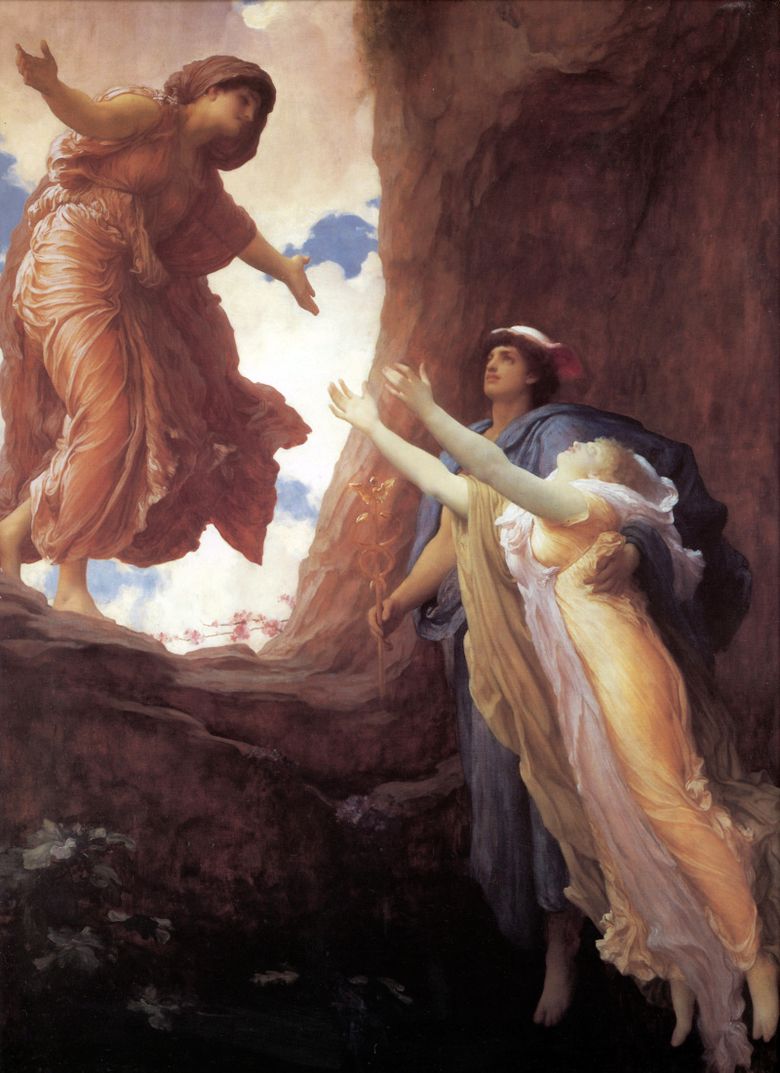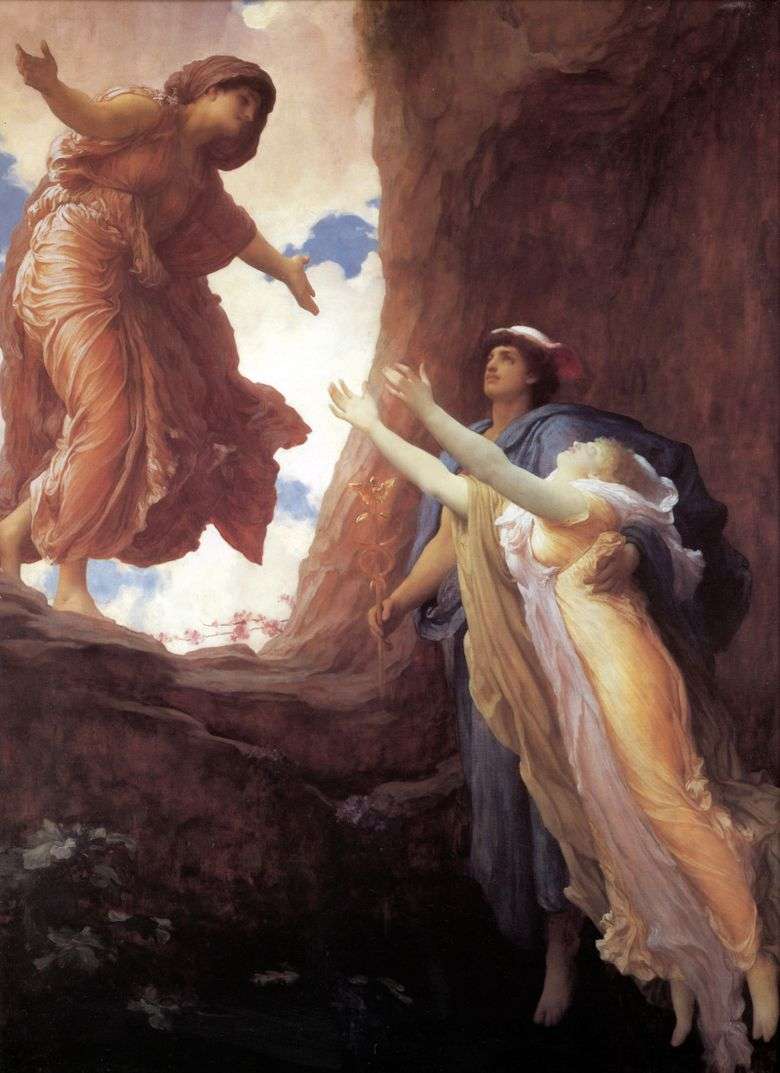
This work illustrates the ancient Greek myth of Persephone, the daughter of the goddess of fertility, Demeter. Persephone was kidnapped by Hades, the ruler of the kingdom of the dead. Demeter, having learned that her daughter was kidnapped, became angry and turned the Earth into a lifeless desert.
Only after Zeus allowed Persephone once a year to briefly leave the country of shadows and return to her mother, Demeter changed her anger to mercy. At all times, this myth was an allegory of the rebirth of life in the spring. “Return of Persephone” Leighton showed at the exhibition of the Royal Academy in 1891 simultaneously with the canvas “Perseus and Andromeda.”
Critics have found this work as a pair. In both cases, the main character was painted by the artist with Dorothy Dean, both paintings are devoted to the same theme – the revival of life and the glorification of sunlight. As usual, Leighton chose to deviate from the traditional view of the plot and wrote a “semi-mystic” scene related to this canvas with the work of symbolist artists. Despite this, the work was accepted by critics rather coolly and declared “old-fashioned.”
 Le retour de Perséphone – Frederick Leighton
Le retour de Perséphone – Frederick Leighton El regreso de Perséfone – Frederick Leighton
El regreso de Perséfone – Frederick Leighton Elisha, the resurrection of the Sunniman’s son by Frederick Leighton
Elisha, the resurrection of the Sunniman’s son by Frederick Leighton The Garden of the Hesperides by Frederick Leighton
The Garden of the Hesperides by Frederick Leighton Nude Breed by Frederick Leighton
Nude Breed by Frederick Leighton Study for the composition “Dance” by Frederick Leighton
Study for the composition “Dance” by Frederick Leighton War Industry by Frederick Leighton
War Industry by Frederick Leighton Lazybird by Frederick Leighton
Lazybird by Frederick Leighton